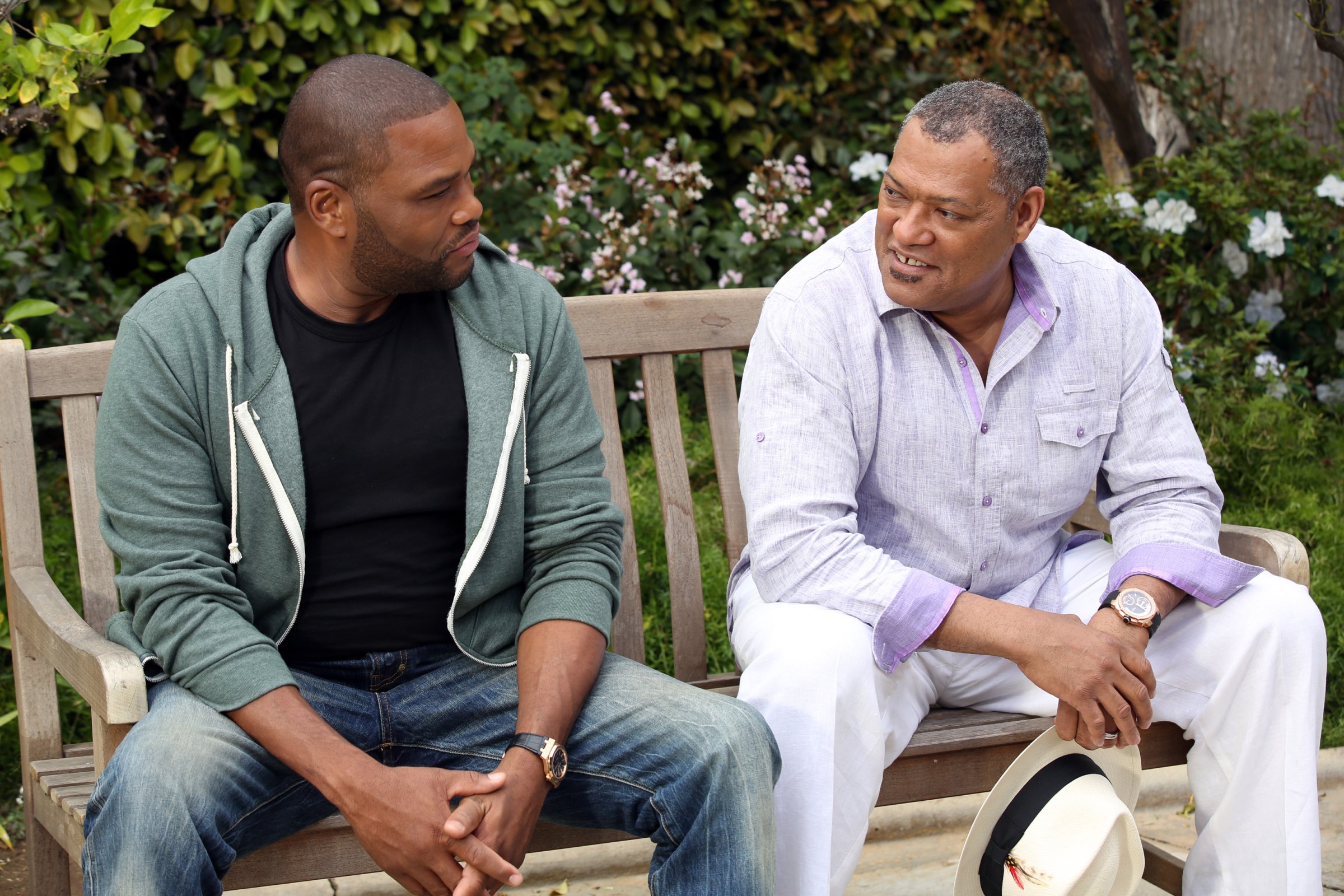
At their upfronts fall-schedule presentations in Manhattan this week, the major broadcast networks announced what was the most racially diverse broadcast schedule in a long time–maybe ever, depending how you measure it. It wasn’t just about “black best friends” this year; there are several new and returning shows with minority lead characters, several of them minority women. The trend was spread across networks–though ABC had an especially diverse lineup–and across groups: not only African American but Hispanic and Asian American actors will lead casts next season.
This is a good thing by any measure. It was just a few years ago that the big networks introduced a roster of new fall shows with no non-white lead characters except for Cleveland Brown of The Cleveland Show, who was voiced by a white guy. But as with anything involving the upfronts, it’s also important to remember who the upfronts are really addressed to, and what they’re really for.
Critics who cover TV, and fans who watch TV, often act as if the upfronts are pitched at us, to get us jazzed for the new shows. That’s a side product, but the upfronts, first, second, and third, are for advertisers. They’re about money. They kick off the ad sales period for the new season; they wine and dine advertisers and clients and try to convince them that the new shows are worth dropping money on. Sure, the networks eventually want us to think their shows are good TV, of course. But first, they need to convince Madison Avenue that their shows are good business.
And maybe the most promising issue in the long run here is that advertisers, for whom the only color that ultimately matters is green, increasingly know that diversity is good business. This hasn’t always been the case, as Mad Men illustrated when Pete Campbell failed to convince Admiral TV to take advantage of a booming market among black customers. But more and more advertisers and their clients have come to realize that if you want America to buy your products, you make ads that look more like America.
When Coca-Cola, for instance, made its “America the Beautiful” Super Bowl ad reflecting different cultures and languages, it probably knew there would be pushback. But given the country’s demographics and shifting mores, the people doing the pushing back aren’t the greater concern anymore. Likewise with ads like Cheerios’ and Chevrolet’s involving interracial couples, or Banana Republic’s including gay couples, or Honey Maid’s, which did both–after which the graham cracker company jiu-jitsued its hate mail into a statement about love.
It’s the right thing to do. It’s decent. It’s fair. But let’s be frank–it’s about dollars and cents, and that’s not a bad thing. Making advertising diverse may not be without controversy, but there’s a clear, simple message that being seen as inclusive is better for your brand image than exclusion. It makes you seem more desirable, more aspirational–and, this is advertising here, after all–it makes you seem younger, in tune with a society that is growing more varied and socially tolerant with the generations.
At the same time, TV networks are now able to go to advertisers and show that airing a show with a star who’s not white is not a horrifying risk. Scandal is a growing hit, and Kerry Washington a rising star. Sleepy Hollow, pairing a black woman and white man as leads, was one of the bigger hits of last fall. The Mindy Project may not be a blockbuster, but it’s survived and grown a passionate following, as has its creator-star Mindy Kaling. Now CBS is talking up its summer sci-fi drama Extant, starring Halle Berry, and the real news isn’t about diversity but about how CBS managed to get such a big star to do the series. Larry Wilmore–who’s also producing Black-ish on ABC, will take over for Stephen Colbert on Comedy Central with The Minority Report next year.
All these shows did not just spring up organically out of the zeitgeist, though. Somebody, like Shonda Rhimes with Scandal, had to cast a black woman as a drama lead, and some network had to take a chance and risk these shows failing. Somebody, too, had to realize that American culture was changing, and that what might have been a red flag for viewers decades ago is now an expectation among viewers, especially younger ones. An Entertainment Weekly feature on TV’s poor diversity record in 2008 quoted Paul Lee, then head of ABC Family, one of the channels that was doing better by multiracial casts, as saying of young viewers, “They’re completely color-blind… they embrace other cultures.” Lee is now head of ABC, which announced sitcoms about Asian American, Hispanic, and African American families, plus another Shonda Rhimes series with a black female lead, How to Get Away with Murder.
And it takes nothing away from anyone to say that this progress has been made not so much with passionate moral arguments than with entertaining TV that generates money. TV’s representation and stereotyping record still is far from perfect. And most likely–as with any other group of series–some of these shows will fail and others succeed; some will be good and some will be awful. But the market has spoken: in primetime and during the commercial breaks, you can no longer just assume that “America won’t go for this.” America has already gone there.
More Must-Reads from TIME
- How Donald Trump Won
- The Best Inventions of 2024
- Why Sleep Is the Key to Living Longer
- Robert Zemeckis Just Wants to Move You
- How to Break 8 Toxic Communication Habits
- Nicola Coughlan Bet on Herself—And Won
- Why Vinegar Is So Good for You
- Meet TIME's Newest Class of Next Generation Leaders
Contact us at letters@time.com